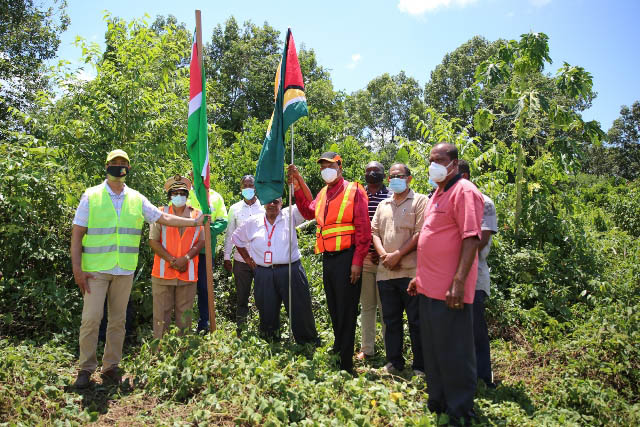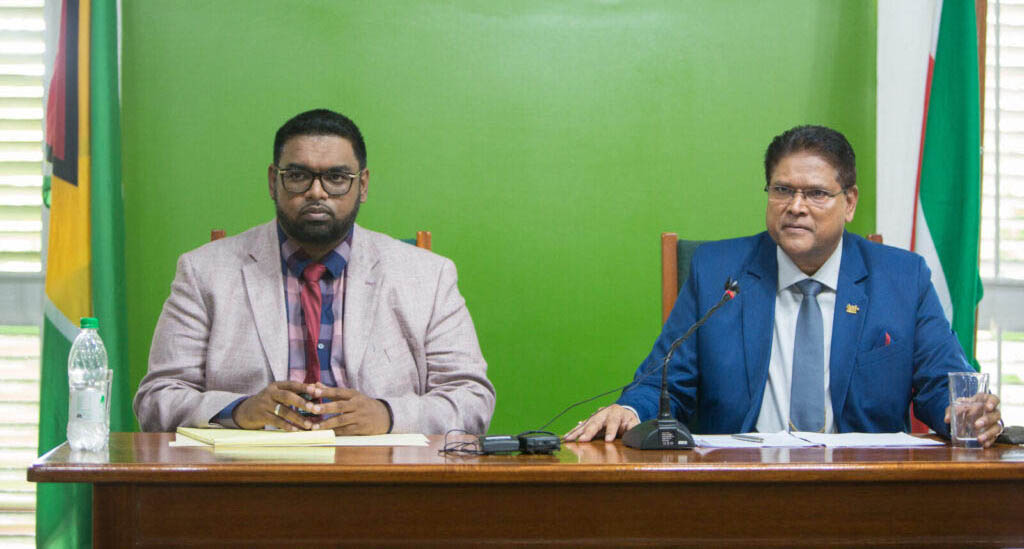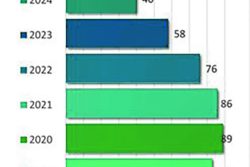With both Guyana and Suriname having realized significant fortune-changing oil discoveries in recent years, two of South America’s poorest countries that have for decades been locked in a border dispute characterized by awkward confrontations could be positioning themselves to engage in a collaborative initiative that could set both countries on a path to comprehensive economic transformation.
Earlier this week, in his first international assignment since assuming the office of Head of State in August, President Irfaan Ali paid a visit to Suriname, his opposite number having earlier visited Guyana for Ali’s installation as President.
The discussions between the two Heads of State in the Surinamese capital Paramaribo explored the possibility of co-operation to create a deepwater harbour that will provide shorebase support services for the massive volumes of hydrocarbon resources to be found in the Guyana-Suriname Basin.

On Tuesday President Ali sat down with his Surinamese counterpart Chandrikapersad Santokhi at a media briefing after the two had signed a Memorandum of Understanding which, among other things, listed several infrastructure projects across the Corentyne River as well what was described as a formation agreement for the Strategic Dialogue and Cooperation Platform between the two countries.
All of this comes following eighteen separate oil discoveries realized by the US oil company ExxonMobil dating back to 2015 believed to amount to around nine billions barrels of recoverable oil resources. Last year, the French company, Apache broke the news that it had discovered around 1.8 billion barrels of recoverable oil in Suriname’s Block 58 in the basin. At the press conference it was disclosed that the first meeting of the bilateral working group for the Strategic Dialogue Cooperation Platform had been held during the Guyanese President’s stay in Paramaribo.
The potential dramatic change in the economic circumstances of the two countries could play a major role in helping to settle a border dispute which, twenty years ago, saw the rise of tensions between them after Surinamese gunboats evicted a CGX oil rig offshore Guyana . Since then the two countries have enjoyed good people-to-people relations though occasional cross-border tensions have arisen from time to time.
“As small border nations it is of the utmost importance to maintain good neighbourliness, to join efforts and to form strategic alliances to achieve maximum success for the development of aspirations of both our peoples in different areas of the economy” President Santokhi is quoted as saying. The Surinamese President is also reported to have said that the recent oil finds have opened the way for the creation of momentum to focus on sustainable development and to realize “the resolution of the existing common challenges of two developing countries”.
The joint Working Group has been assigned the task of seeking to determine the best approach to realizing the envisaged offshore base which is expected to be a US$1 billion investment. Signs that the two recently installed administrations in Suriname and Guyana were moving to consolidate bilateral relations came following the Surinamese President’s visit to Guyana and the subsequent visit to the proposed site for the planned construction of a bridge across the Corentyne River by official teams from both countries.
Further, earlier this month, the Government of Guyana disclosed that it would be seeking Expressions of Interest for the development of a deepwater harbour in Berbice, which, according to Public Works Minister Juan Edghill would served to “facilitate the possibility of landing cruise ships, shorebase facilities and the capacity to be able to bring in larger vessels.”
On the matter of the establishment of the joint facility President Ali is quoted as saying that the two countries are “exploring synergies” at this time.








